|
|
| PREV | 1940| NEXT
| |
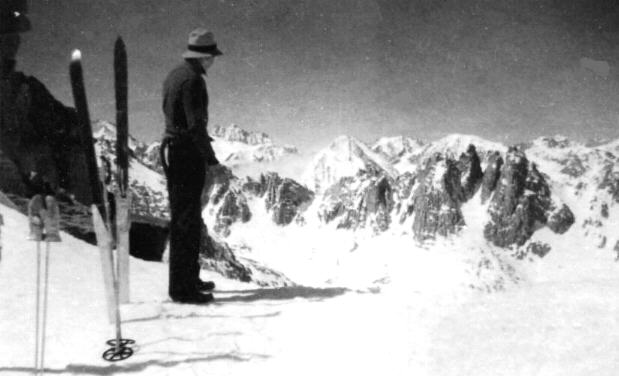
Bob at Kearsarge Pass
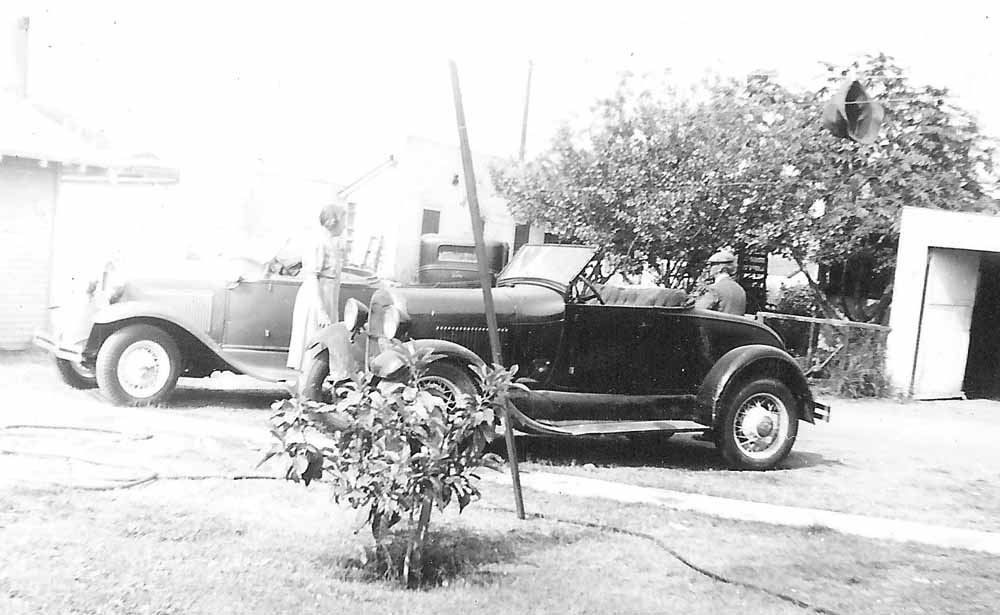
Bob's mom, Judy and Mr. Quinn, Bob's '31 and Marian's(black) '31 Ford ragtop coupes in gasoline alley (312 E 91st St. - Thor and Judy's house)
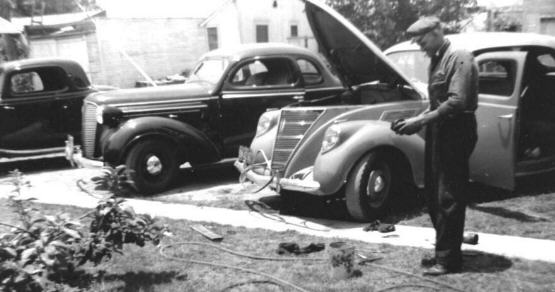
Gasoline Alley. Robert's dad, Thorwald is the resident mechanic.
1935 Chevy, 1936 Dodge, and a 1937 Lincoln Zephyr at right with tow cables still attached (see story to the right).
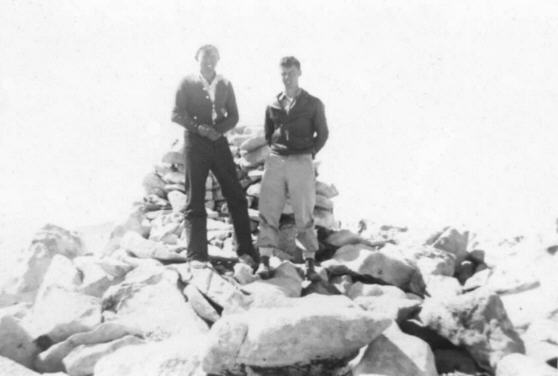
Robert and James Britten on San Gorgonio
Car across alley was Phyllys Maltby's Chevy hard top coupe. Bob came home late one night and noticed an orange glow in the window and woke Phyllys up. She had apparently dropped a cigarette on her upholstery. The car was totalled!
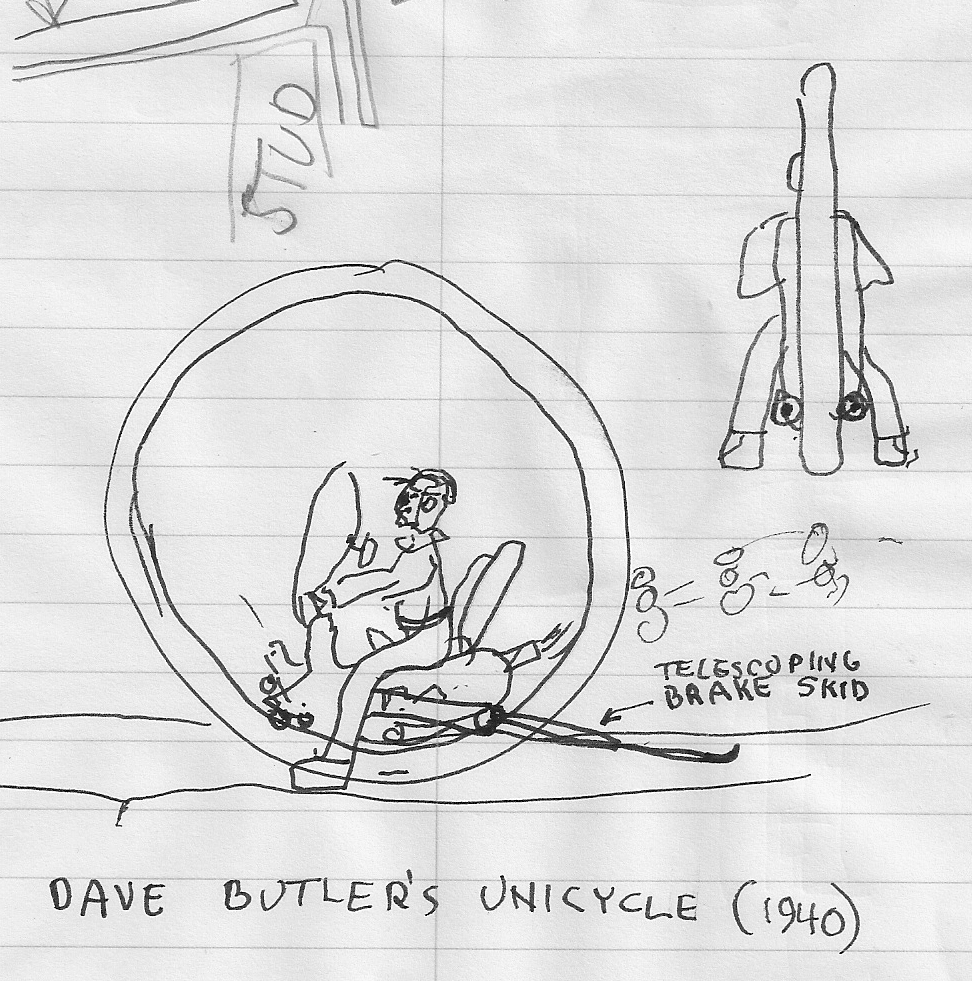
Bob's drawing of Dave Butler's concept vehicle
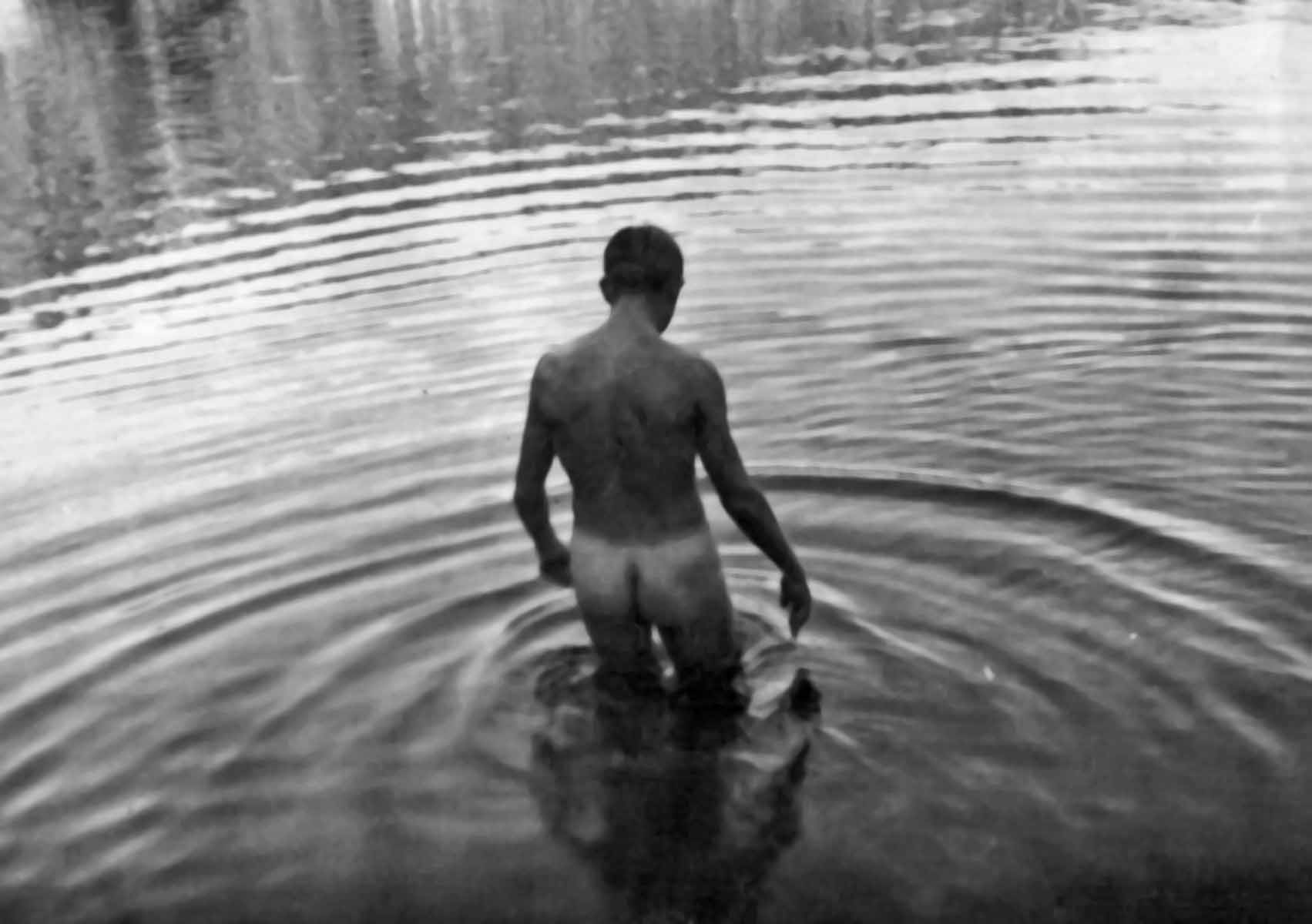
Bob in vicinity of Mt. San Gorgonio braving the icy water of "Dry Lake"
Bob used his oak skis constructed by his dad several years prior in the following adventure, described by Bob:
"One time I joined an expedition to cross the Sierra Nevadas. There was one volunteer that drove our party of 5 up to Onion Valley on the East side, and another volunteer who drove up to pick us up at Cedar Grove in Sequoia Park.
Herringboning up to Kearsarge Pass and going downhill on the sunnyside in the afternoon, I was suddenly stopped by a patch of melting slush and fell with my Eye on the tip of my ski. The tip had been modified to a knob to loop the canvas climber on, and the knob pushed my upper eyelid behind my eyeball.
My companions had to lag back and guide me the remaining 10 miles to Cedar grove, and we were all very late arriving back in LA where I got fixed up in the emergency room. "
Bob traded in 2 cars this year. He explained:
In 1940 I traded my '31 Model "A" Rumble-seat Ragtop with 16 inch wheels for a 1937 Lincoln "Zephyr" that had 40000 miles, priced about $450. The 12 cylinder V-12 engine required "Super" gasoline.
After I had drove it for 3 months, my 2 friends, Don and Dwain, both on leave from service in the Navy suggested that we drive the Zephyr to Las Vegas during the week end, They would buy the gas. We stopped for gas in San Berdoo, and going up the Cajon Pass grade,
I noticed the engine was "pinging and asked what kind of gas the boys had put in my tank. "The cheap stuff...12.9 cents a gallon", they admitted. By the time we arrived in Victorville, the exhaust was blowing thick smoke. We pulled into a gas station and, assuming that the cylinder head gasket had blown, we borrowed tools from the gas station operator, bought a couple of head gaskets and when we got it started again, it soon was blowing smoke.
I telephoned my father in LA and my folks arrived Sunday morning with the tow rope and pulled us back to LA 100 miles with the '29 Essex. My father diagnosed the problem as a crack in the engine block which, soon after the engine warmed up, the crack would open and cooling water would leak into one of the 12 cylinders.
My father suggested that I trade the car in. We drove it over to the Ford Dealer, parked it for 3 hours until the engine was cool. I picked out a new $700 1941 Ford V-8Coupe. They test drove my cooled-off Zephyr, and accepted it as a trade-in.
Three months later, the LA County Sheriff telephoned me, asking if I owned a 1937 Zephyr. I said I had traded it in to the Ford Dealer for another car. The Sheriff explained that they had found my Zephyr in 10 feet of water in the bottom of a San Fernando Valley gravel pit, still registered to me.
Bob was working this year. He recalled in 2010:
"In 1940 I was starting in the Tracing group of the Engineering Department of the Douglas Aircraft Company in Santa Monica. Working on a large glass top table illuminated from below the frosted glass by florescent tubes, original pencil designs on large rolls of paper vellum were traced in India ink on superimposed large rolls of linen velum. The tools used were straight-edges, a large assortment of French curves, tee squares, triangles, ink ruling pens and compasses, crow quill pens and many heavy weights.
"The techniques of using the tools had been taught in high school. Our work was boring, but the 30 members in our group each worked earnestly with hope for quick advancement to take a more important role in the engineering we were tracing. We had to share some of this equipment. This was usually accomplished by any needful member shouting across the room, “throw me that number 7 French curve", or whatever, and the thing being then tossed like a ball across the room. One day, it happened that one man needed a 3 pound lead weight with a wire prong, called a "duck”, which went sailing over my head, but was missed by the receiver, and the duck crashed through the receivers' paper, linen, frosted glass, tubes and spilled India ink spattered throughout the chaotic mess.
"My means of coping with the ennui was occasionally to doodle inane cartoons with my crow quill on the scraps of linen used for testing the pen, and the quality of these doodles was recognized, and I was promoted to a position of Illustrator in the department's Handbook Group.
"The Handbook Group was responsible for writing, illustrating and publishing material for educating the personnel of the people who bought and operated the Company's aircraft. War production had resulted in a shortage of trained technical writers and illustrators. The Company was recruiting needed additional people from interesting local sources. Writers and illustrators needing a job that would shield their family incomes from the effect of the military draft came from the film studios, Warner Brothers, and Walt Disney, for example.
"These people, specializing in entertainment, sometimes lacked in expressing mechanical ideas, probably in the same manner as mechanically trained people might lack talent in writing film scores and producing animated cartoons. So I found myself of some value to people who needed help in expressing effectively words and pictures that would assure the pilot that his aircraft could do the job and land safely. As an example, on the XB-19 project, the flight control surfaces were moved by piped oil pressure with the pilots feeling the air resistance on the surfaces through a set of pulleys and wires indicating surface’s position, which combined with an interconnection to the oil pressure, gave the pilot feel of the wind resistance on the 40 foot tall vertical stabilizer. The novelist who wrote “Sioux City”, and the animator of ”Snow White” needed a mechanic to help them teach others how to keep the machinery functioning.
"The writer I was assigned to make illustrations for found that I had a talent to criticize and help rewrite some of chapters of the B-19’s books, and I learned a lot about writing in a short time, and soon I was doing more writing than illustrations. It happened that the writer I was assigned to had a problem with alcohol and I ended up finishing his work. I was promoted to the position of Tech Writer, soon supervising a group of writers and illustrators, and working 80-hour weeks to meet our deadlines. At the time, the B-19 was the world’s largest airplane, 50-tons, 50-feet tall, 212-feet wingspan, 8-feet high rubber tires, 12000-mile cruising range, but with a cruising speed of only 150 miles per hour, it was obsolete before it was ready to fly.
"In 1943, it was flown to Wright Field in Ohio, where it was to sit as a museum exhibit, possibly with my “Handbook of Maintenance and Flight Instructions” in a leatherette pocket, adjacent to the pilot’s console. It was later determined that there was no funding for the museum, and the plane was sold as scrap -- only one of the huge wheels was saved.
"In 1940. Mr Dave Butler, a collegue of mine in the Engineering Department of the Douglas Aircraft Company in Santa Monica invited me to his home and
while his wife served us a delicious dinner, he explained his invention, which he called a “Unicycle”. It consisted of a steel rim about 6 feet in diameter with a pneumatic rubber tire on the outside.
"On the inside was a wheeled truck with a seat and handlebar whereon the driver straddled, with feet extended on each side to hold the device erect when stopped. The
truck was coupled to the rim with clamping metal wheels supporting the
truck so, as the rim rotated forward, (for example, downhill} gravity moved
the truck backward firmly within the rim, the driver mounting his feet on
rests and balancing as on a bicycle. Propulsion is provided by a gas engine
under the seat, pulling the truck backward within the rim by driving a
rubber friction wheel. Hand brakes between the truck and the rim were to be
operated by a lever on the handlebar.
My complaint about his machine was that it would be uncontrollable, except
at low speeds and on gentle slopes.
We agreed to discuss a solution to this problem as soon as it occurred to
either of us. Seventy years later, I was explaining this invention to my
daughter, Elsa, and a solution then occurred to me. Dave would be 110 years
old now.
My solution is to have telescoping hydraulic cylinders with metal skids on
the ends projecting backward from each side of the truck, when braking,(to
prevent the truck from riding forward on the rim when brakes are applied).
Sorry about that delay, Dave.
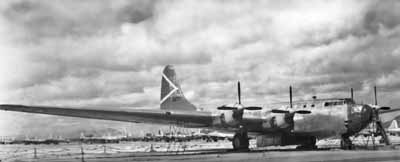
XB-19 after completion
Bob continued working at Douglas Aircraft as an illustrator this year on the XB-19 project.
| |
|
|
| PREV | 1941| NEXT
| |
|
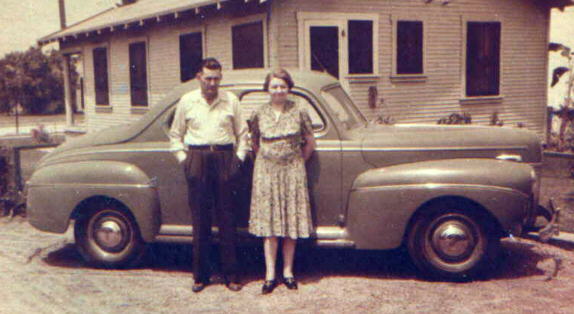
Bob's folks, Thor and Judith, in front of Bob's brand new '41 Ford

Bob by his new car

Sister Marian on his new car
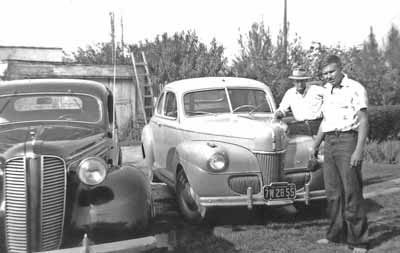
Cleaning new car
Bob described his final oak ski adventure:
"I was with the same companions atop San Gorgonio when we stopped to rest before a quick downhill run, and I had unbuckled my old oak skis, standing them up in the snow, when one ski fell over and slid away down the Big Draw, never to be seen again, and my companions had to wait in our car about three hours while I trudged through deep snow to catch my ride home without any more oak skis."
Bob also recalled:
I often think of lost friends. At Fremont High School in ’39 the California National Guard had a program where students could attend a weekly evening one-hour meeting and get paid $30 per month. My neighbors and classmates, Bob and Bill Wilson tried to interest me in this easy money, but I had read Dalton Trumbo’s WW1 novel, Johnny got his gun and that book scared me to abhor the threat of being cannon fodder.
During the Fall of ’41, I went to Exposition Park and sat with Bill and Bob where the 160th Infantry was assembled. The boys were sleeping that night in pup tents waiting for transportation to the Philippine Islands. In this visit I wished them well but said nothing about my resolve to avoid being cannon fodder. About 4 months later we got the word that Mac Arthur had surrendered the 160th to the Japanese, affirming my resolution to keep out of it.
Bob later found out that Bob Wilson died in the Bataan Death March.

XB-19 after completion
Bob continued working at Douglas Aircraft as an illustrator this year on the XB-19 project.
| |
|
|
| PREV | 1942| NEXT
| |
 Robin at Malibu Beach in 1946 Robin at Malibu Beach in 1946

Bob recalled around 2010:
Don and Duane, not I, continued in the scouts and became Sea Scouts. Their troop had a longboat in LA Harbor and they were oarsmen and ended up joining the US Naval reserve and were called to duty in 1941. I, who had read about the horrors of war, instead got a job that deferred my being called to such duty. In 1942, Don and Duane both got leave from their duty, and we all went shooting for rabbits in the desert east of Palmdale.
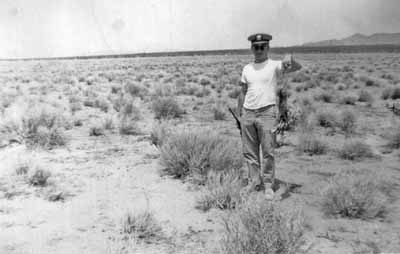
USN Ensign Duane Raymond later became a competitor suitor for Bob's future wife, Ruth
We had all rented 22 caliber repeating rifles and had a good walk but saw no rabbits. That afternoon, each of us having nearly a whole box of 22 caliber bullets left, blundered onto a pile of tin cans and bottles that someone had dumped. In the mesquite sage and greasewood near the highway, we arranged these bottles and cans as targets and backed off about 200 yards to determine who was the best sharpshooter.
Crawling to the prone position of a sniper, each of us discovered that our targets were too far away so we began crawling closer Don, who was 20 feet to the left of me had crawled about 20 feet ahead of me as I was cradling my rifle in the crotch of some greasewood. My shot struck a mesquite twig and ricocheted into the middle of Don’s sweatshirt!
We were near our parked car and, after getting directions at a gas station were at the Palmdale Maternity Hospital within 15 minutes, where the only doctor on Sunday duty within 50 miles probed Don’s wound and said the bullet must have fallen out.
He put a band-aid on it, I paid $25 and he said he must report gunshot wounds. Two days later Two FBI agents found me at home and explained that when anyone shot a Navy man, they were required to make a complete report of the incident.

XB-19 after completion
Bob continued working at Douglas Aircraft as an illustrator this year on the XB-19 project.
Due the the war, Douglas demanded everyone work 80 hour weeks. This would eventually be too much of a strain on Bob, who would go AWOL the next year.
Bob was dating Robin, an artist. However, near the end of the war, Bob found out he was too "normal" for her, so she married another artist instead.
Robert remembered this adventure:
"After seeing a film on Saturday night, Chester Mateer suggested we get some gas and go in his 21' boat to Catalina. Gas Rationing was in effect, so only 5 gallons of gas was taken. Chet slept while Robert piloted. Robert then went to sleep at the wheel and was awakened by the rising sun as the boat cruised in circles.
"We had turns on the aquaplane on the way over and arrived at Avalon Harbor, dropped anchor and got a water taxi ride to the pier.
About and hour later we got a water taxi ride back to our boat, but it had dragged anchor and was making green paint marks all along one side of a distantly anchored large white hulled sailboat.
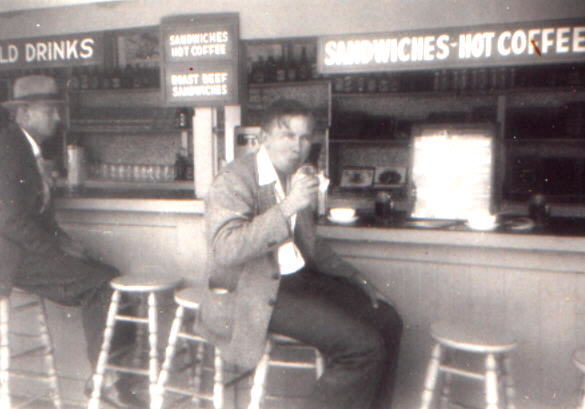
On the pier at Avalon Harbor, Catalina Island
We guiltily decided to not wait there (we really needed more gas because of the circles and the aquaplaning), so we headed back to San Pedro.
We ran out of gas about a quarter mile outside the L.A. breakwater and Chet saved us from being wrecked against the breakwater by finding about 1 quart of gas in his bilge pump motor.
We again ran out of gas about a quarter mile from the Watchhorn Basin dock. Using the bench seat boards as paddles, we made it to the dock."
| |
|
|
| PREV | 1943| NEXT
| |
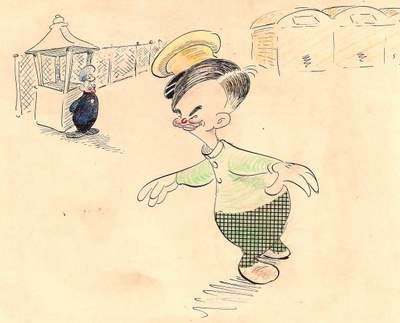
Picture of Bob leaving Douglas by Tom Armstrong, a cartoonist fired by Walt Disney in strike of 1943, after working on Sleeping Beauty, Fantasia, etc.
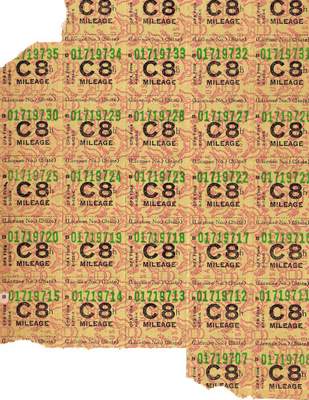
Fuel rationing stamps of the time

Bob's mom, Judie, and her "victory garden on 91st St."

XB-19 prototype was completed this year, but was already obsolete
Bob continued working at Douglas as a writer and illustrator this year on the XB-19 project.
He worked on the maintenance manual for the XB19 at this time. He replaced the project leader, Oliver Shea, after he was fired for taking too much vacation. He did much of the illustration, but when Tom Armstrong came aboard, after being fired by Walt Disney for striking, the quality really shot up. There might be a copy of this manual at some aircraft museum, such as the one at Wright Field. Bob said it is a real work of art.
Bob also recalled circa 2010 on his going AWOL for 2 weeks from his job this summer. He remembers going up with his friend, Tim. He thought he did this in 1939, which he may have done, as well, but he also did Whitney this year. Tim was refused admission to the armed forces due to his athsma. So the following Whitney story may have taken place either in 1939 or 1943:
I rode with Tim (Gorline) up through Lone Pine, parking his Ford at Whitney Portal and carrying our sleeping bags only as far as Consultation Lake, waking early the next morning, traveling light with a sausage, apples and canteens up the switchbacking trail scratching footholds with our sticks on many patches of icy snow. At one point we were passed by a man leading a heavily packed burro and a few minutes later, saw the burro slip on the ice and slide down the snowbank, flailing his hooves rolling to fortunately stop a short distance below us and the man running past us to unpack the load so the unhurt animal could get up.
Farther on this 6000 foot ascent we came out of the shadows and had less trouble. At the highest point in the continental USA we were prepared to leave our mark. Tim had brought a small can of red enamel and brush. Our names and date are on a rock perilously facing the enormous drop-off, out of sight to all except fools like us - perhaps 100' below the summit.
Sometimes I wonder if that red enamel has withstood 70 years of granite spalling frost. That night, on our way back to LA, we stopped, when passing a car stopped with smoke coming from its engine.
Tim, always prepared, asked the ladies helplessly watching their car burn, "can I use my fire extinguisher on it?" With his CO2 he had the fire out immediately, and with his Crescent Wrench, quickly had a gas line tightened, and their car started. We arrived back in Tujunga about 2 AM.
Also on this trip they climbed San Gorgonio. Bob was fired when he got back to Douglas, and his draft card was changed, as Bob recalled:
I had a job which deferred my being drafted. My draft card had granted the deferment until “Nov. 31st 1943, a joyful “typo” since November only has 30 days.
Many of my friends had volunteered to enlist in 1942, Bill Adamson, Jerry Jolequer, Chester and Ervin Mateer, Jack Watts, Tom Magurty, Walter Blighly and others forgotten and numerous.
I later found out what happened to some: Tom Magurty was shot down defending London from a blitz, Jack Watts was lost at sea. Jerry Jolequer was shot down over France. Walter Blighly was shot down over New Guinea, and Bill Adamson was shot down on the last day of the European War over Ploesti, Romania.
I had a new auto and had worked 80 hours per week, but one tired day in July ’43, Chester’s grandmother asked me across the backyard fence “Why aren’t you over there fighting?” To avoid further embarrassment, I chose to volunteer(in lieu of being drafted into the army) in a non-combatant outfit; the Sea bees “Join the Navy and follow your trade”.
About 9/1/43, Bob railroaded to Boot Camp, Camp Peary VA (Now the training camp for the FBI) to train with the 18th Super CB. About 11/1/43 Bob joined the CB maintenance Unit 570 at the Amphibious Training Base at Hutchinson's Island, Fort Pierce FL.(Construction and training support for the US Navy demolition Teams and for the Joint Army-Navy Experimental and Testing Board.aka JANET).
At Boot Camp we had Marine Corps Drill Instructors, 40 mile marches with 40 pounds of equipment, bayonet practice, obstacle courses, short haircuts, followed by weapons training in anti aircraft target shooting, trench mortars rifle range, building barbed wire entanglements, amphibious obstacles, live ammo belly crawling, the whole infantry tamale. I was a re-enforcement in the 6th NCB relieved from Guadalcanal, entititled to wear the shoulder patch of the 1st Marines.
Bob remembers he managed to get 2-3 weeks leave for the holidays this year. He had to go north to NYC, where he went to the top of the Empire State Building. He heard a commotion when he got there: a man had just jumped off. When he got down to street level, they were still mopping up the blood. He went into a candy store, and when people saw his uniform, ushered him to the front of the line, where he got a nice box of chocolates. When he got to L.A., he gave them to his girlfriend, Robin Patterson. He only had 5 days at Christmas before he had to head back to base.

Bob was apparently briefly in Rhode Island December of this year
| |
|
|
| PREV | 1944| NEXT
| |
|
Judith, Bob's mom kept some of the letters and envelopes he sent her in a scrap book. Here are some of the envelopes:
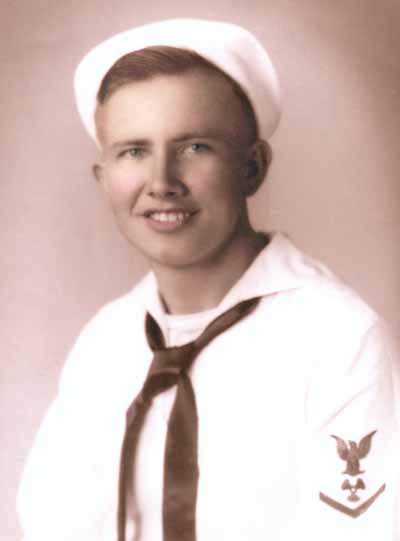
Bob

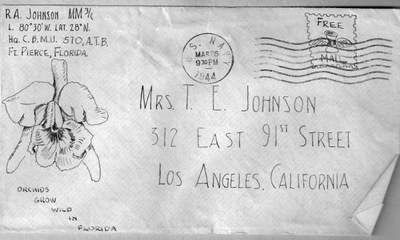
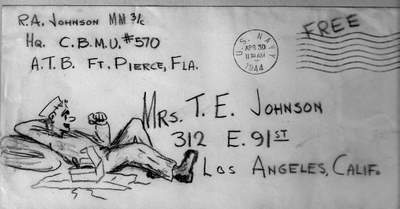

Bob found out he would be sent via train to California about this time
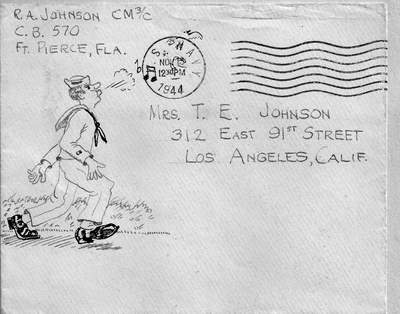
One last letter before leaving
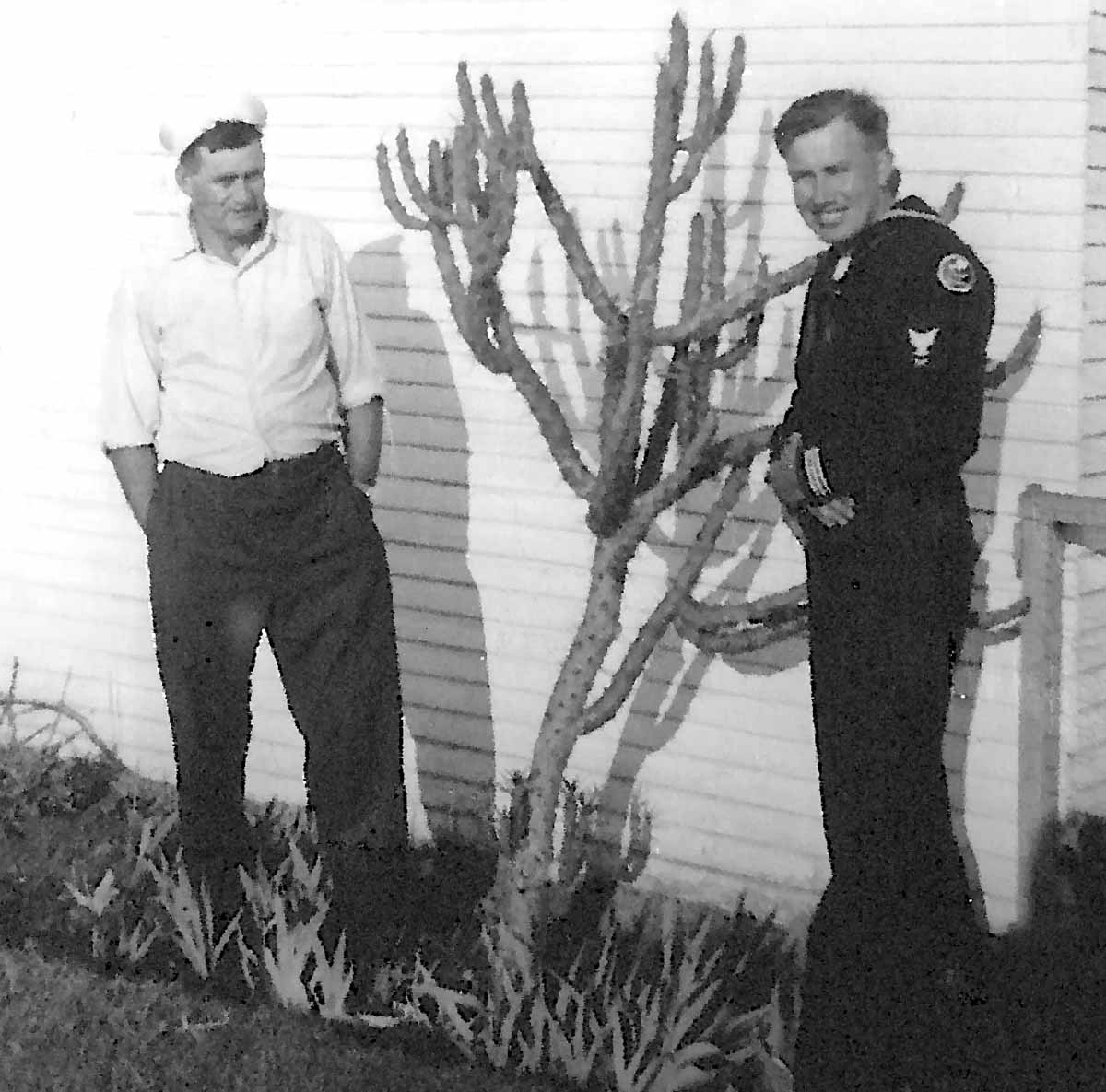
Thor and Bob
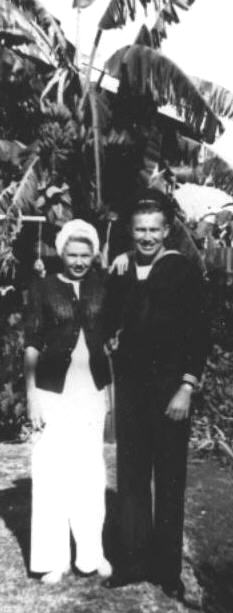
Marian(pregnant with Janet) and Bob
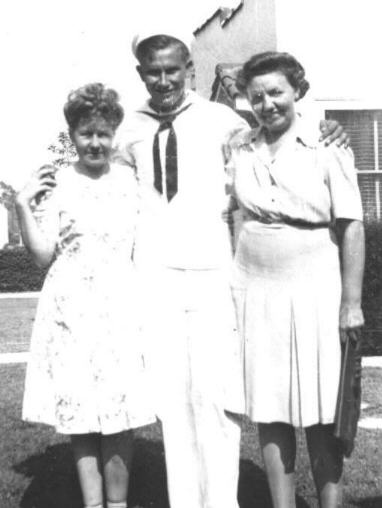
Aunt Minnie, Bob, Judith
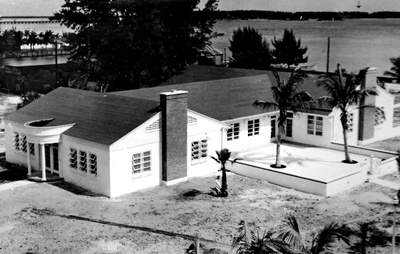
Ft. Pierce
Bob worked on the plans for a large scale simulation on the D-Day invasion. Among the demonstrations was a radio controlled boat with 50 tons of explosives that took out the steel reinforced breakwater the SeaBees erected (6' high and deep, 200' long). One piece of that boat landed in an evacuated school 3 miles away!
Bob recalls:
JANET BOARD
"While stationed at the Navy's Amphibious Training Base in Fort Pierce, Florida in 1944 as a Carpenter's Mate (Surveyor) 3rd Class in Sea Bee Maintenance Unit No. 570, our CO, LT.F.M. Davis, recognizing my incipient talent as the unit's bulletin board cartoonist, assigned me to do illustrating work for FDR's Joint-Army-Navy-Engineering-Testing Board, of which he was a member, representing the Navy's Civil Engineer Corps.
"The JANET Board, I understood, was established for the purpose of encouraging and using the wartime nation's civilian population's resource of inventiveness to help win the war, wherein a request was published for members of the public to submit ideas. My part in this effort came after many of these ideas had been developed and were ready to be demonstrated before a select group of Allied Military Commanders before a grandstand erected on the beach at Fort Pierce Inlet.
"Our Unit had the responsibility for setting the scene for staging this event, and I illustrated the Program Brochure and also participated in the labors of constructing some of the objects which were targets of some of the following described inventions:
- A General Sherman Tank, fitted with a long set of booms on its front supporting a sprocket and chain driven drum rotating many heavy chains that flailed the earth in front of the tank to explode the minefields before passing through.
- Another tank, with a large egg crate full of rockets used to blast way through a heavily reinforced concrete wall 9 feet tall, 6 feet thick.
- A landing craft, fitted to launch toward submerged underwater obstacles submarine torpedoes that had the normally 2-foot long warheads replaced with 50-foot long ones.
- Floating docks composed of steel boxes capable of being bolted together to any configuration and pushed to shore. ... and ending the show....
- A landing craft, crammed to the gunwales with explosive cratering compound,which when set off in the surf, flung a piece of the boat 3-miles across the Indian River into the City of Fort Pierce.
"There were many other parts to this demonstration which others can better describe, particularly those members of our unit whose expertise was used a short time later, to continue this work on the beaches of Normandy. My last job, before being deployed to the Pacific Theater, was to swim into the crater in the surf to measure the hole's dimensions with a long stick."
Bob's commanding officer, Lt. Francis Marion Davis, requested Bob make a few pieces of art, such as:


Graduating Class

Legend of Graduating Class
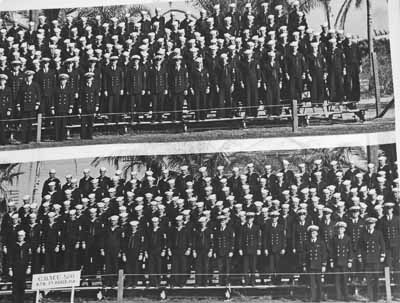
Bob may be in this pic of this larger group at Ft. Pierce
Bob recalled in 2015:
About 11/1/44, railroaded to Treasure Island and Livermore CA for training as an infantry Mortar Platoon member.
| |
|
|
| PREV | 1945| NEXT
| |
|

Marian & Bob - Marian is, at this point, a mother with a job as a riveter with North American Aviation

Bob says of this photo of his girlfriend, Robin: "I was on Okinawa, photo enclosed showed a soldier's hat on her table.... she later explained it was a friend, Staff Sergeant xxxxx, a lousy thing to get in your mail! Sept, 1945...could change your plans."
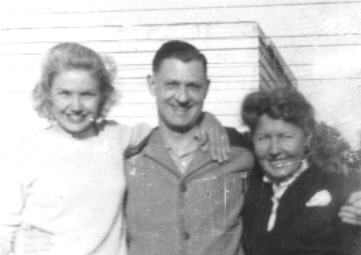
Marian, Uncle Bob (who was responsible for tranferring his nephew, Bob, from the Army to the Naval C.B.s), Aunt Ted
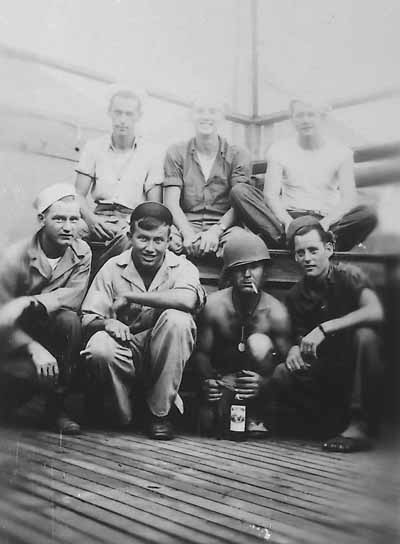
Bob and his mates on the voyage into the Pacific
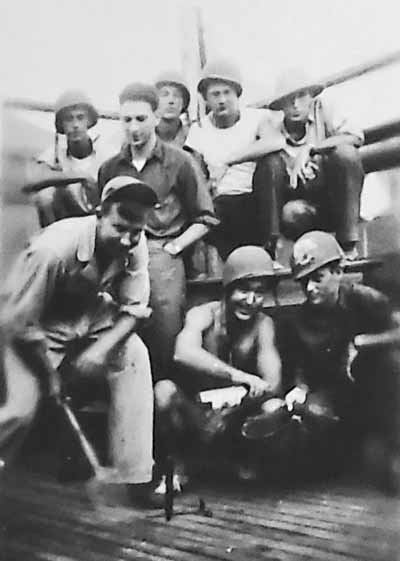
Swatting flies?
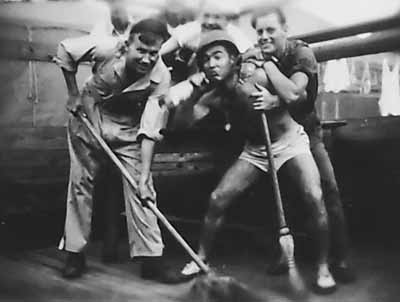
The type of work a swabby would do
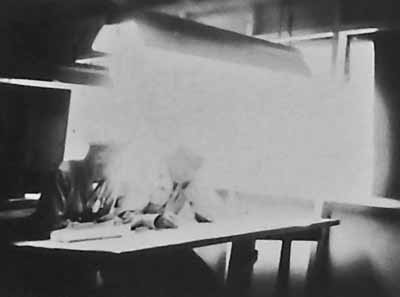
Workstation like the one Bob probably worked at
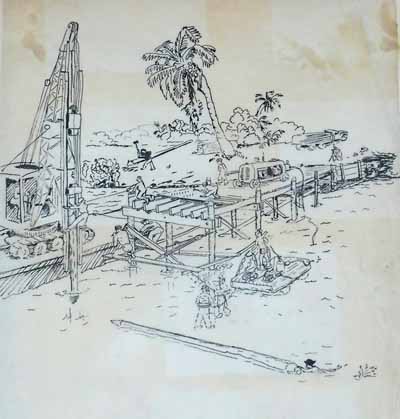
Bob's drawing of the pier project
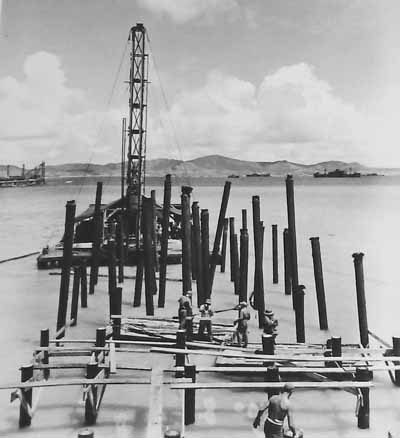
The beginnings of the pier project
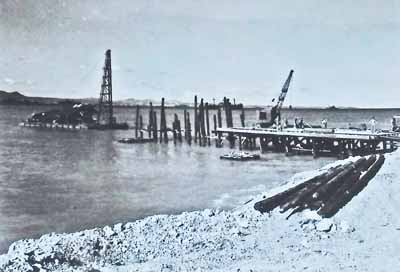
From the side
Bob recalled around 2010:
About 1/1/45 based at Port Hueneme Ca with weekend liberty to LA until boarding Gilliam. My work then was assignment to a Land Surveying Party.
47 days on a troopship, one night in May ’45 I clambered down a cargo net into an LCI and under heavy overhead lighting by AA fire at a Japanese obsevation plane, waded ashore on an Okinawan beach to pitch my shelter half.
We were put to work building roads and harbor improvements, never saw any Japanese and were never close to any of the action known as “The Battle of Okinawa” and all felt relieved two and a half months later when we were told about the bombing of Hiroshima and Nagasaki and that we could forget about the plan for us to take the beaches of Honshu.
Bob started the year at Port Hueneme. The Naval troop carrier (the first in its class), the USS Gilliam embarked men of the 6th Seabee Battalion a Port Hueneme, California, and sailed 28 May 1945 for Okinawa via Eniwetok and Ulithi. She off-loaded cargo and passengers at Okinawa and then headed back to San Francisco.
Bob remembered in 2015:
As I boarded the Gilliam, my work then was assignment to a Land Surveying Party.
A more detailed explanation of landing on Okinawa could be found in his blogs made Oct.2010:
Call me a liar, Joe those are fighting words. I ain’t a 90 year old draftee for
nothing. I helped draw the plans for your dad’s Iwo landing, transcribing the
field notes of our naval pre-landing scuba-diver spies mapping Iwo’s beaches off
subs. Our ship was under fire when we clambered down those rope nets into those
bouncing boats at night. That morning I had the experience of seeing a boot,
floating in the surf. When I retrieved it, I found a foot still inside the boot.
That made me thankful that I never got a scratch!
An earlier blog:
In June 1945, when we landed on Okinawa, Our first CB campsite was in a rice
field was near a cliff that had a series of cave-tombs dug into the limestone.
Some of these tombs had been used by the resisting Japanese troops as sniper
posts and had been burned out. We learned that the tombs (with wood doors that
we broke into, not only because of our curiosity, but to assure ourselves that
the tombs were not a threat to our camp) were fitted with shelves, and on the
shelves were boxes of bones, and we realized that these were the ancient tombs
of the “Lu Chu” families that had forever farmed the rice fields. We were later
told that the custom was for the natives to reverently keep these bones clean,
and to make token offerings of food to their ancestors regularly.
The things
that most interested us grave-robbers were the small ceramic china vessels, in
which these food offerings were placed, alongside of those bones. These small
keep-sakes were durable, beautiful and portable. Perhaps we are damned for
having these on our USA knick-knack shelves.
Also, while on Okinawa, Bob remembers:
Our officer in charge of the pile driving barge in a bay on the island of Okinawa had some experience running a crew that set a line of telephone poles across the island. We were driving wood pilings to get a docking pier extended into the bay and the steel points on the piles were not penetrating the coral ground in the deeper water and a number of wood poles were breaking under the force of the 5-ton steam hammer.
So he got an inspiration to try a new method of penetrating the coral. His pole setting crew had used "shaped charges" to dig the telephone pole holes. These charges were a high explosive shaped like a dixie cup, a hollow cone. The cone was fixed to the bottom of the wood pole inside of a sheet-metal stool that supported the pole erected over the point chosen to set the pole. When the cup was detonated, half of the explosive force was focused downward under the pole spearing a 6-foot deep hole in the soil into which the guyed pole fell, saving the labor of using a post-hole digger.
Why not use it to set pilings deep into the coral? So a fresh piling was fixed with a shaped charge, detonator connected to the exploder, piling lowered to the coral underwater, 5-ton hammer atop the pile, ready to begin hammering after the explosion. He set it off, The wood pile broke in its middle. The 5-ton hammer drove itself and the splinters to the bottom of the bay, ripping the steam hose and the valve off the side of the steam boiler, and every member of the crew including the officer-in-charge dove into the calm warm water of Buckner Bay.We learned the next week that the dock was thought no longer needed because of the Atom Bomb at Hiroshima.
He also remembers:
On a small tropical island, bored troops wasted away on their cots in their pyamidal tents. I learned that our officer in charge of recreation had recieved a volleyball and a net. So I picked out a spot behind our row of tents, dug two postholes, found two 8-foot posts to set, and laid out a court, hoping to find someone to kill the ball with. While I was doing this several of my mates jeered at my efforts, but soon one joined me, then more. I thought I was going to enjoy my play, but soon we had dozens of competitors teaming up and I was relegated to be only a spectator, leaning on a shovel.
Bob's envelopes this year reflected where he was:
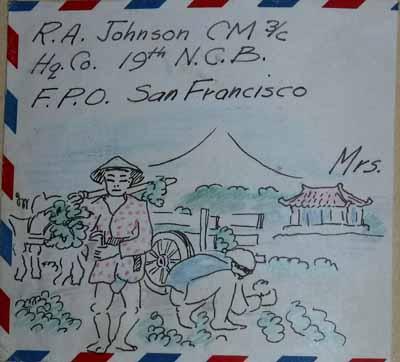
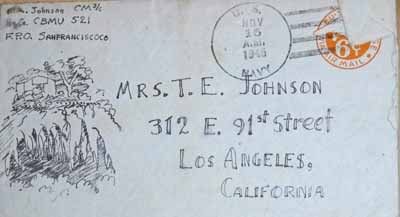
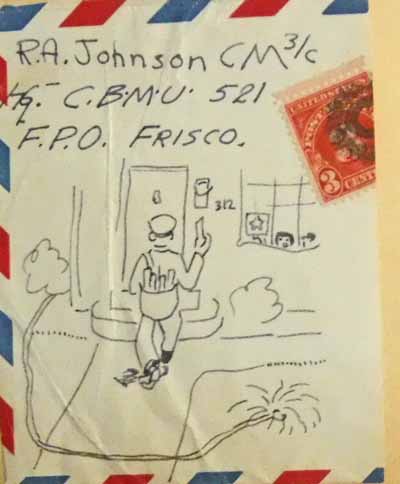
He also remembers:
Our 1945 Seabee encampment at Nagagasuku Bay intruded on the terraced farms close to the concentration camp of the thousands of displaced farm famllies. Their keepers often escorted small family groups on foraging expeditions through our camp. Bearded me, alone, encountering, and outnumbered by a foraging group, was startled by their reaction to my bearded presence...The 'Loo Choo' natives are all talented mimics, and each of that group, impressed with my beard, competed with each other to mime a fat strutting Santa Claus!
Bob remembered surviving Typhoon Louise late this year by cowering under a caterpillar tractor while pieces of quonset huts flew around, buildings were trashed and ships sunk or ran aground:
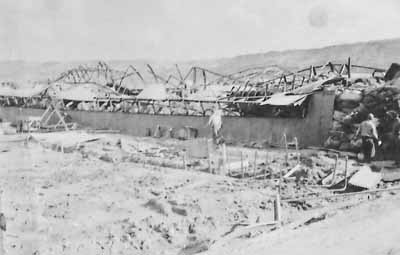
Damaged Buildings
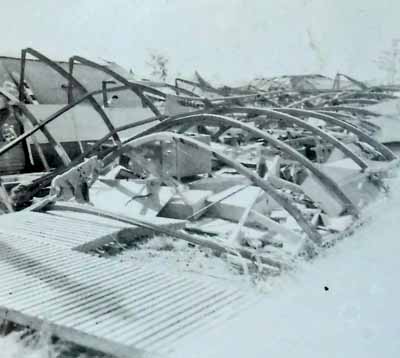
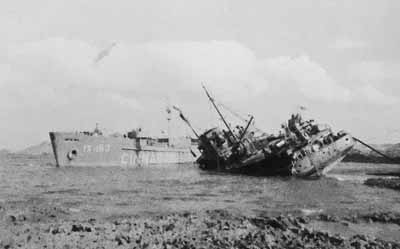
Ship aground
| |
|
|
| PREV | 1946| NEXT
| |
|

Bob grew a beard while on Okinawa this year
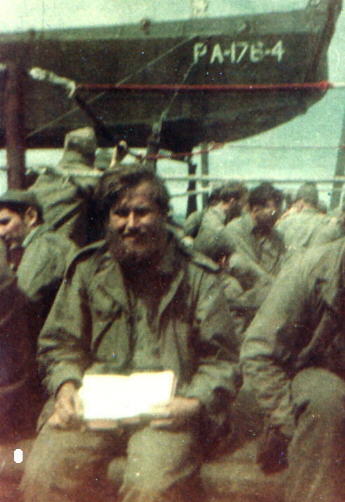
Bob on voyage home from Okinawa. Due to the numbering "PA-176-4" of the amphibious vessel on the deck of this ship(probably attached to Davits with an alternate use as a lifeboat), the ship is probably the USS Kershaw (APA-176), which undertook several shuttle missions to return armed forces back to the US mainland from 1945 to 1946 in Operation Magic Carpet.
Bob explains in 2015: "Photo of me posing with my beard (taken by shipmate Rodney Lundeen). We boarded that ship at Okinawa about 3-11-46. They made us scrape paint off the foredeck down to the bright metal for 8 hours every one of the ten days returning to San Francisco. The Captain announced that "No one would disembark in SF until every man was clean-shaven. I ignored the command. About 2 days out of port, my shipmates ganged up on me and held me down while I was given a bloody shave, Dressed to kill, we were put on a wooden Passenger Railcar and overnighted to San Pedro where I was discharged on 3-23-46 and given busfare home. About a year later Ruth and I drove to Rodney's house on Orange Grove Drive in Pasadena and talked him out of the Polaroid Photo."
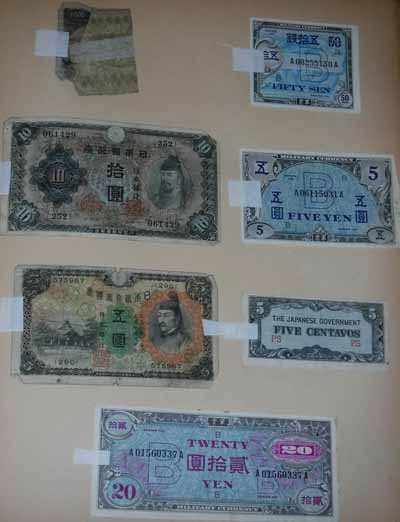
Souveneir Japanese currency - maybe some new ones issued under American occupation

Malibu beach west of Malibu Creek, 1946, the week I drove her to LAX so she could marry the Brazilian cinematographer and fly to Rio
WIKIPEDIA PIC OF KERSHAW
 Robin painted this watercolor of the VA hospital near where Bob lived Robin painted this watercolor of the VA hospital near where Bob lived
Bob recalled:
On my 11 day cruse from Okinawa to S.F., the captain of the ship told everyone that if certain men didn't shave, then no one was going ashore in S.F. I was nearly lynched on the day S.F. came in sight, and was intimidated by my shipmates to get shaved.
Soon after my discharge from the Navy in March 23, 1946, I joined the 52-20 club, a veteran's benefit which game me $20/week for 52 weeks, provided that I enter an education program. I applied for admission to Cal Tech, USC, and where my beach buddies had succeeded, chose Compton Junior College, the closest. I managed to get enrolled in Math, Physics, Chemistry, English & French -- elementary type classes. I had my Ford Coupe from before the War and that was helpful in making friends. I needed a distraction since my return to my pre-war associations was unsatisfactory. My girl friend, Robin, had called me (at my parents home where I was living) and asked me to drive her to the airrport. On the way, she explained that she was going to New York to marry a cinematographer.
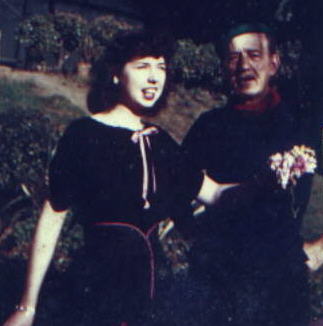
Robin and Johnny Patterson
At Compton Jr. College, I met several girls during the next 52 weeks. They were mostly interested in my car, a rarity among college students in 1945 - 46. We went to beaches, horseback riding, nightclubs, and football games. Few of the girls were interested in an unemployed elderly student (Robert was 25 at the time) except for the convenience of the car.
In my calculus class, one of the 12 students was the only girl, Ruth. I sat next to her and she got along well in the group. She had a brain and was quite attractive. I wasn't the only one interested in her. She was not the type to waste time on entertaining.
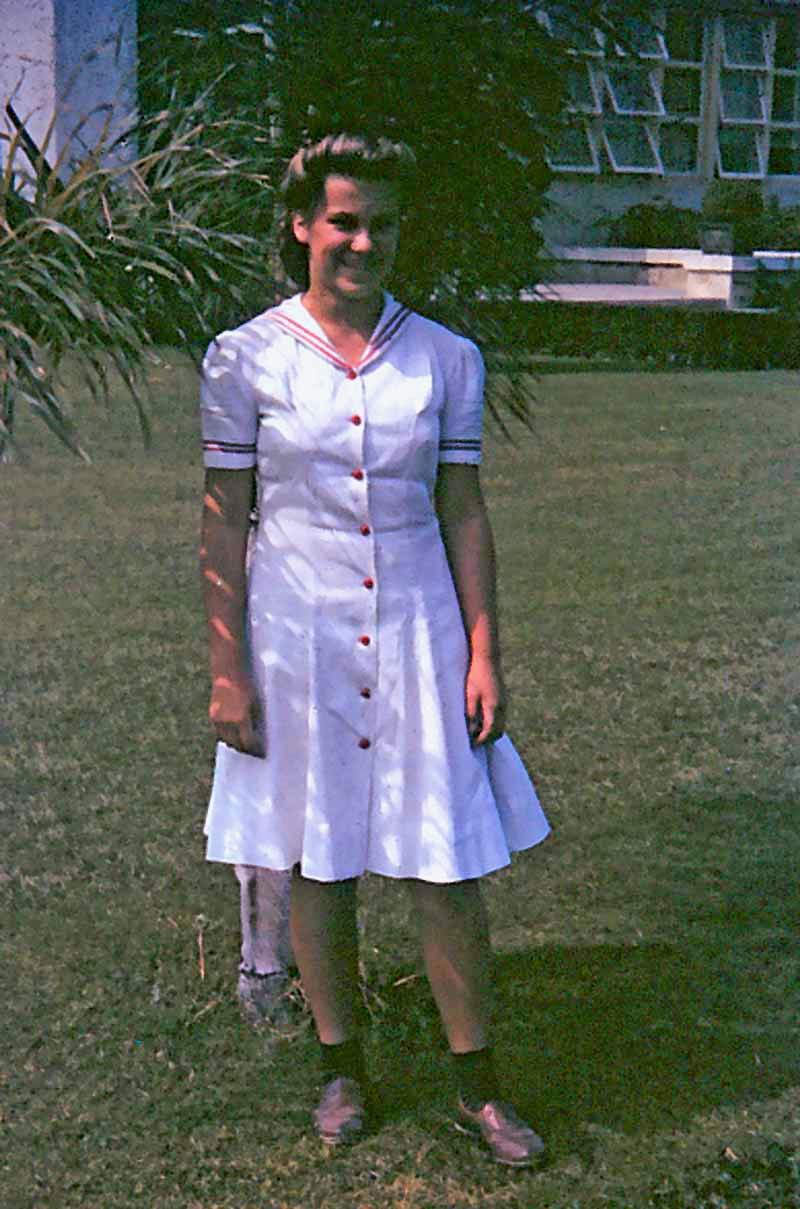
Ruth
Ruth had run away from home and was living with 2 (married) teachers at Compton College. They advised her to change her name (without any approval by family or court). Hence, her name was Henson in the marriage licence.
Once, shortly after first meeting Ruth, she asked me to stop by a small mom-and-pop grocery store in Willowbrook, so she could visit a moment with friends.
Ruth was "at home" with her schoolmates, but I was apprehensive about venturing into a totally black community, but I got by with my smile while my future fiance joked, touched, and pranked her old companions, thinking nothing of pulling a couple of cokes out of their cooler and drinking them before I could offer to pay. The money was not accepted. This store was 2 blocks from Ruth's family home. I never met Ruth's mother or father - Ruth would not allow it!
We did look at the nearby Watts Towers.
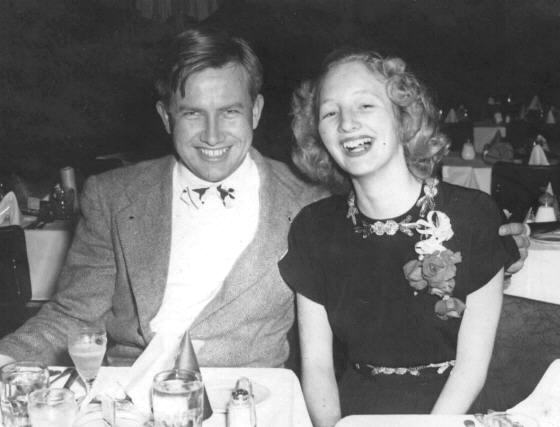
December 31, 1946, Robert with Barbara Baer at the Florentine
In regard to his New Year's Eve date this year, Bob remembered:
Barbara lifted a bottle of champagne from the icer of our neighboring table. When confronted by the neighbor, she explained that we had ordered one just like his and she would return it to him when our order was filled! But that never happened!"
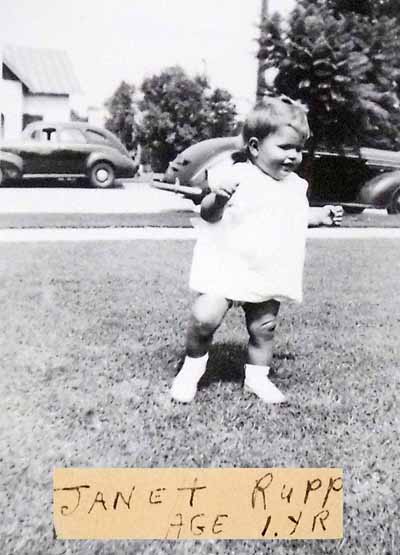
| |
|
|
| PREV | 1947| NEXT
| |
|
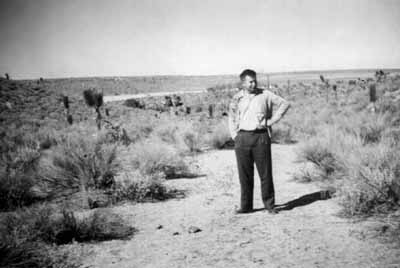
Bob considered homesteading this property on the Mojave River near Barstow this year, but found a good lot on Landa St. near the good jobs in LA instead. This pic was taken in 1949.
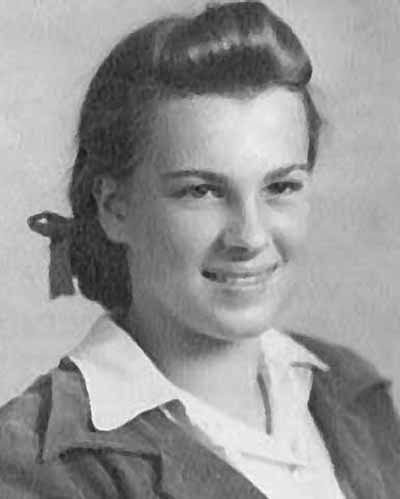
Ruth

Setting up footings for house on Landa Street
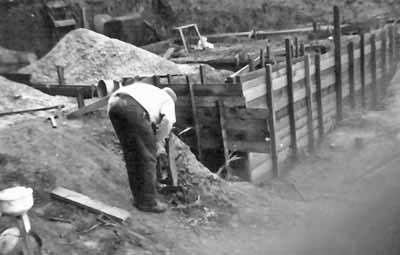
The story behind this picture, according to Bob in 2010:
"This form work starting in August 1947 was for the 1964 Landa 20x25 foot house Ruth and I moved into in that December. Anecdote!...Neighbor Sam Lucas had disassembled the form shown while we were away at our jobs because he disapproved of it, and was helping us do it his way at the time this photo was taken. On week-ends Ruth and I stayed in an on-site tent, other nights we slept in my parent's house across town. I have no idea where this photo has been all these years!"
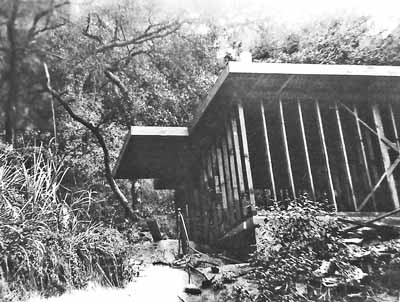
After framing
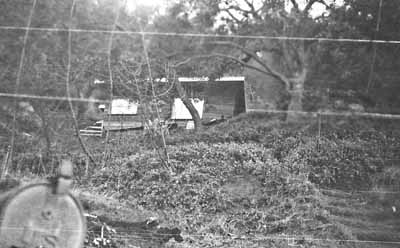
After siding, but before windows; note mailbox bottom left (about 15' from street)
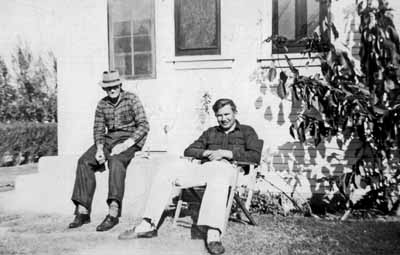
Thor & Bob
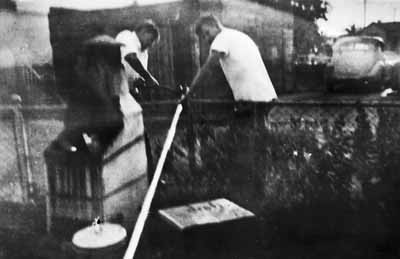
Thor helping Bob thread a pipe to be used for a sprinkler above Landa Street house
Regarding his job, Bob remembered in 2017:
When I started working for LA County I '47, my boss had just inherited Biscailuz's giant roll-top desk. Jef looked up Biscailuz on wikipedia and found that
Eugene W. Biscailuz founded the CHP. He is the grandson of the first paid law enforcer(founder of the LAPD) of LA, William C. Warren (1836 - 1870), who was killed by a dispute with a bounty hunter -- who was acquitted. Whether the bounty was paid is still unknown.
Regarding Ruth, Bob recalled:
"We did not date or go nightclubbing or to the beach, but we talked. I had about $1200, the car, and a place to stay and eat with my parents and was a serious student. I told Ruth she was the girl for me and that we could make plans.
Ruth lived in a rented room with her girl friend. The room was one of the rooms of a house owned by an old bachelor. The girls had kitchen priveleges and the old bachelor seemed to resent my presence.
Ruth had left her parents home while she was 17 years old. She was an intimate friend of a married couple of teachers at Compton Jr. College. These teachers had advised her to leave her family and come live with them. To avoid being forced to come home by her parents, also to change her name. Ruth changed her last name, Van Leersum, to Henson (perhaps the same as the married teachers). That was her name when we got married in August 1947. Ruth resisted my proposal of marriage until I did 2 things. In May 1947, I took a Civil Service exam for a job with L.A. County. Ruth and I drove around L.A. about that time looking for a building site. Our conversations led up to plans to use my $1200 to buy a lot and for both of us to get jobs and live together on my parents back bedroom while we worked together on weekends to build our own house.
Ruth had many friends. The Enq family were her neighbors. Dr. Enq had and office on 3rd and Spring Street in downtown L.A. As a requirement for a marriage licence, Dr. Enq took our blood samples. As payment for this service, he asked me to travel with him while he made house calls in several bad neighborhoods, as a sort of bodyguard.
Dr. Enq had 6 kids and 4 cars.
My sister Marian and her husband Frances Rupp had been building their own house. Ruth's brother Gerard had built his own house. We could do it.
One day in June 1947, I rode my bicycle from South Los Angeles to Marian's house. On this bike ride, I passed Landa Street and Fellowship Drive and saw the FOR SALE sign. The same week I recieved notice that I had passed the Civil Service Exam. In August Ruth and I both started work, she as a 200 word/minute typist at Title Insurance. We bought the lot and started building. We were together earning $500/month, and worked Sat. and Suns. getting the permit and buying 1 board at a time, finishing the 450 sq. ft. house with a roof and windows, water connection and a dirt floor and moving in Nov 1947.
Bob and Ruth had purchased a lot in the Silver Lake District of Los Angeles in the hilly terraine of Cerro Gordo.
Ruth's roommate before marrying Bob was a witness at their wedding, along with her boyfriend. It was a court wedding.
During the initial period of home-construction, on weekends, the couple camped in a tent on their home building site on Landa Street.
The water meter was already installed, and they used a gasoline lantern to keep working into the night.
Some days, after work, the couple would work until 10, sack out in the tent, and drive to Bob's parent's house at 312 E 91st to clean up before work.
After 3 months, they moved into the 450 square foot house on Landa Street, still using the gasoline lantern, and living on a dirt floor, and using an outside toilet.
Scrap lumber was used to get up the hill without getting muddy shoes.
For the next 5 years, they worked, earning about $500/month, and spending 20 hours a week making home improvements.
Time was spent buying materials, porting them up the hill, hammering, sawing, mixing cement, building scaffolds, plumbing, wiring, etc.
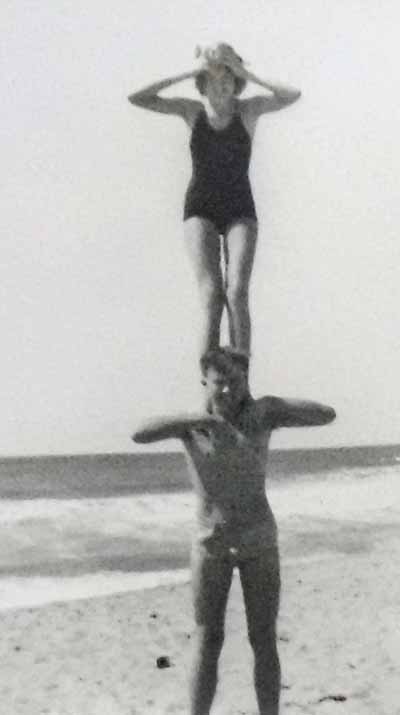
Bob & Ruth
The Courtship of Ruth Van Leersum:
My education and experience about girls was retarded. Family poverty directed me to help, starting early earning what I could doing jobs for neighbors such as were available to kids, like mowing lawns, peddling handbills ,selling newspapers on a street corner, all leaving little time for socializing. My parents required me to attend the Lutheran church every Sunday, culminating in my confirmation ceremony.
At 13, the reverend Carl Berner had instilled in me an ethic that said ”Prepare for your future marriage and family responsibilities by living a clean life”. That was my first reason for becoming an unsocial-workaholic night-school attendant, giving attention to job preparation, rather than the opportunities for fun and games. Thus I became employed in a responsible position and had my first serious involvement with an employee whom I supervised.
Robin’s artist’s life fascinated me and although I courted her, taking her places and having fun, my peculiar ethic overwhelmed her interest in me and she found another. One more basis of this retardation was the case of my virginity being drafted into the military life at the age of 23. Besides the complete isolation from femininity for almost 3 years, the indoctrination of the idea of chastity by Commander Gene Tunney (through a film) kept me out of whorehouses, as well as continuing the ideals of my father that I also abstain from nicotine and alcohol.
So after the war was over, and I found myself sitting next to the only girl in our calculus class, we helping each other with the homework, my strange platonic attitude may have distracted her attention from the 11 other schoolboys despite the 8-year difference in our ages.
I had taken and passed a County Civil Service examination and saw a way to propose marriage to Ruth. At the time, Ruth had absconded from her father's house some months previously and had obtained a job with a downtown title company, and she and another girl had rented a room together.
Conversations about the practicality of a marriage led to our shopping around for a piece of land, talking about slowly, with our weekend labor and talents, building a house with our combined earnings, then moving into the still unfinished house as soon as possible.
Her response to the proposal was also to regard the decisions as tentative, subject to termination if things did not work out. Another stipulation, which I agreed to, was to not have children until we were living with happiness, comfort and security. We had a civil marriage in August 1947, lived about 3 months in my parent's house.
I had $1000 in savings. We chose and bought the land, worked and built a house which was ready with a roof, window glass and plumbing, but with a dirt floor when we took up residence on Landa Stree in December. One other of my father's ideals was "Never borrow money". Perhaps this partly goes to explain the failure of our marriage in 1961.

Bob, Ruth & Thor
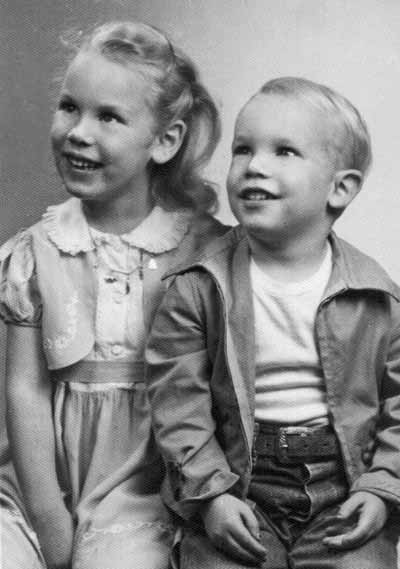
Ruth's cousins Patty & Don
| |
|
|
| PREV | 1948| NEXT
| |
|

Landa Street house - Bob, Ruth, and visitor George Staybolt, aircraft engineer from Douglas

Bob wearing his GI leftovers in January
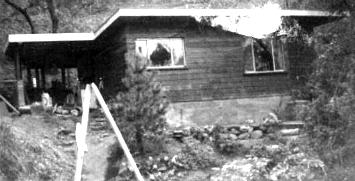
Monterrey pine was planted this year
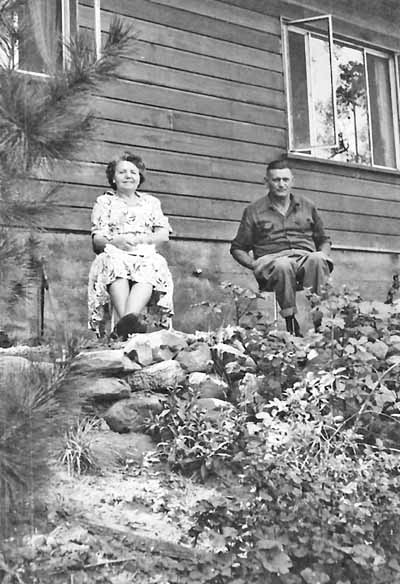
Bob's folks, Judith and Thor visiting
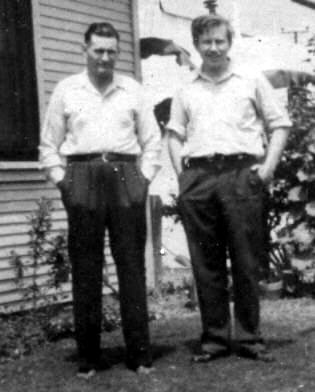
Bob's dad, Thor, and Bob
A rare snowfall (3 - 4") was observed on this property in the beginning of this year, and none has fallen since!
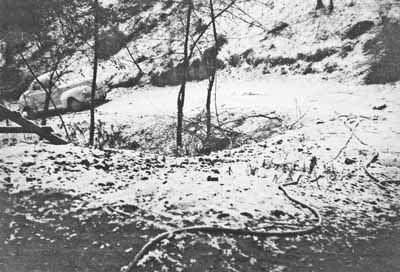
Snow by driveway
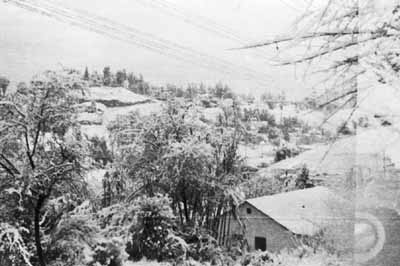
Snow scenes taken on street at final descent of Landa to Whitmore street
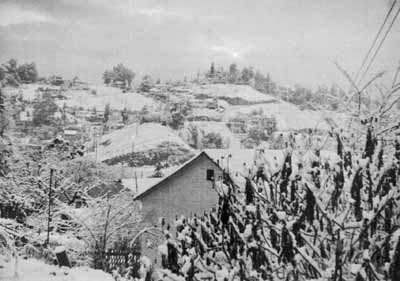
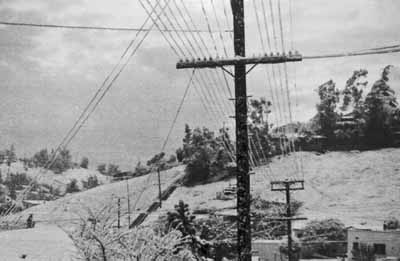
The couple continued working on improving the house, getting a sewer connection, finishing the floor & bathroom by April 1948.
Since so much had to be done to get the house in order, Ruth did most of this work, while Bob continued working for the county.
One of their methods for getting building materials to the house (50' above the road), was to make a 'boat' using a piece of aluminium sheet metal purchased surplus from an airplane factory and 2"x10" lumber. They attached a rope and pulley to this, and Ruth drove the truck down the street. The boat, usually containing sand for their concrete, was then pulled up to the level of the house.
This was before credit cards, so they waited for Bob's paycheck, cashed it at the bank (they didn't even have a checking account), went to the lumber yard, purchased the building materials, and went home to build with the new materials.
In fact, the couple did not even have a bank account all the way into the 60s, living paycheck to paycheck.
Bob remembers driving Ruth to various Badminton tournaments. She usually won, but was only there for fun.
As they would in each of the following years, the couple drove around the country and camped. That summer, they went up to Oregon to visit Bob's Uncle Charlie, camping at various points of interest, including Crater Lake.
Ruth continued working at Title Insurance (T.I.), typing trust deeds.
Bob recalled:
Progress on the house was slow. A 3 room, 20 x25-foot, with a flat roof, dug into a notch on the steep hillside with a primitive set of 40 steps ascending through the mud and poison oak we were proud to call home. We occasionally entertained guests at intervals between spending long sessions of buying and portering materials up to the site, digging, forming, pouring, measuring, cutting, hammering, erecting, wiring, plumbing and working on scaffolds. Sometimes accepting offered advice and help from sympathetic neighbors. All of this during evenings and weekends, while 5 days a week, going to our office jobs, clean, rested and presentable."
| |
|
|
| PREV | 1949| NEXT
| |
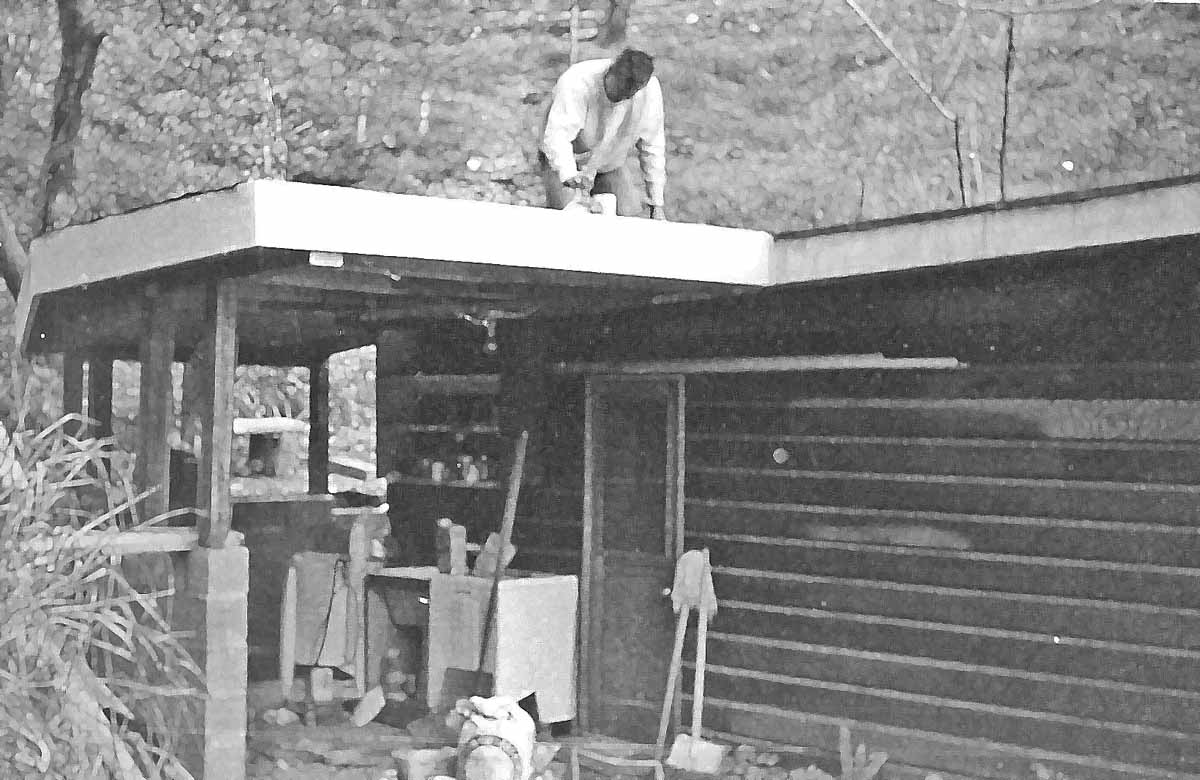
Working on main house
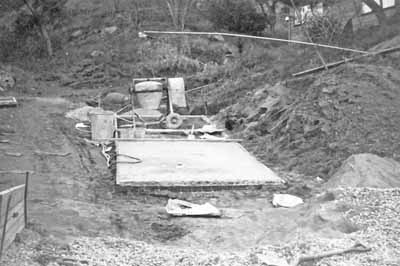
The floor of the new garage was built first. Note: the ingenious method of lighting the work area at night! (long pole holding light does not get in the way of work). This floor and a concrete driveway were probably constructed this year.
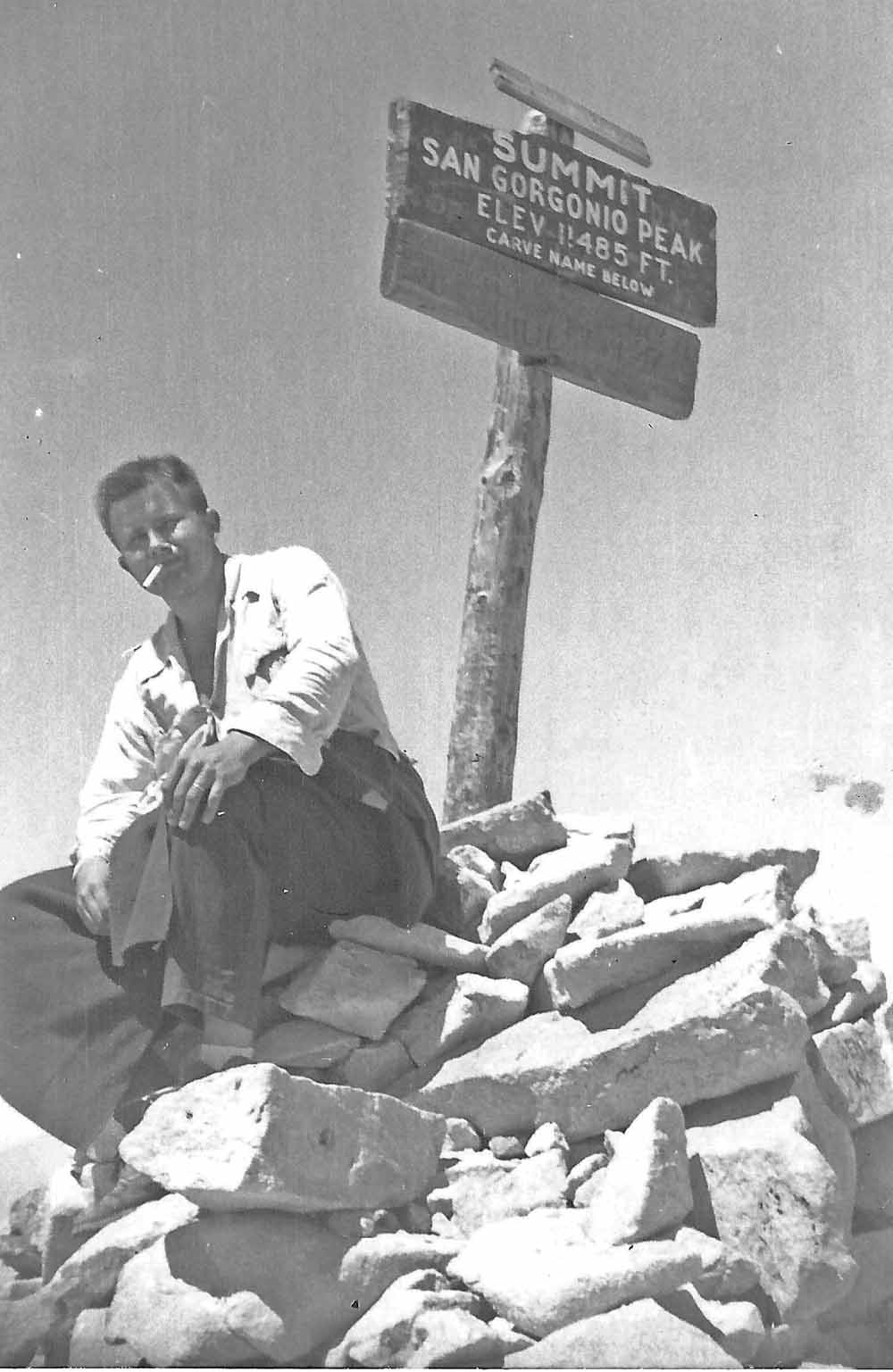
Bob probably took Ruth on some of his old hikes
The original house was expanded to have a shaded patio in the back. This later became enclosed and part of the inside of the house.
Robert and Ruth continued upgrading their new residence. It was about this year that a neighbor above them had cleared some vegetation and a good storm had caused a mudslide. After this, the mud pushed up against the back walls of the house to a depth of about 5 feet! Shortly after this, Bob dug out the mud, and the couple built a cinderblock wall behind the house.
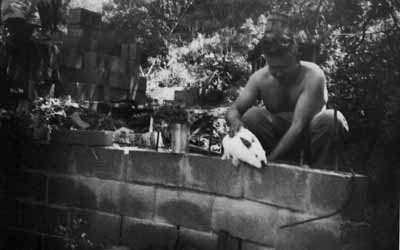
The couple raised rabbits starting around this time and started terracing
Every year, including this one, they took about a week or so to travel around the country and camp. This year they hit Bryce and the Grand Canyon.
Ruth continued working at Title Insurance and Bob with the county.
The City of LA told them they had to provide "off-street parking", and so the began designing a garage.
| |
|
|

 Robin at Malibu Beach in 1946
Robin at Malibu Beach in 1946

































































